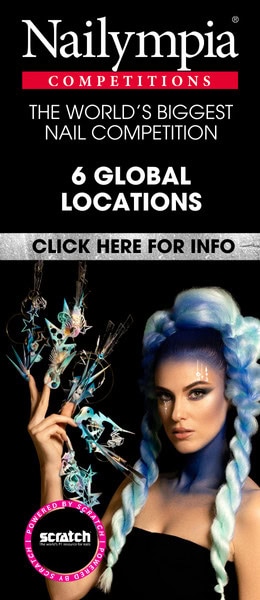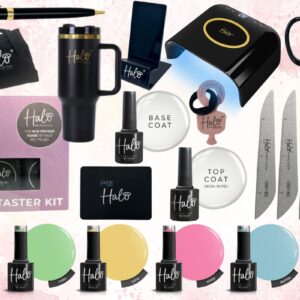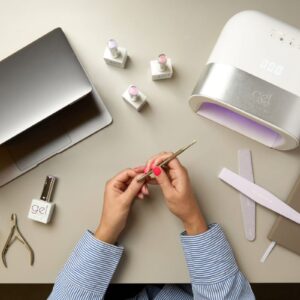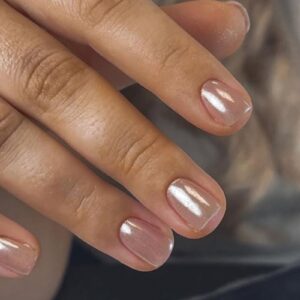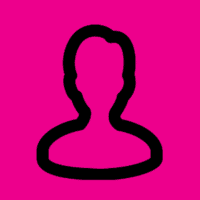
Searching for a new nail or beauty role? An expert shares CV, interview & trade test tips
By Guest Writer | 10 April 2024 | Business, Expert Advice, Feature

 Linda Hill, founder of award-winning aesthetic and beauty recruitment agency, Linda Hill Recruitment, expert speaker & best-selling author of Beauty Therapist to Entrepreneur, answers questions about how to make a job application shine…
Linda Hill, founder of award-winning aesthetic and beauty recruitment agency, Linda Hill Recruitment, expert speaker & best-selling author of Beauty Therapist to Entrepreneur, answers questions about how to make a job application shine…
What should nail and beauty pros look for in a job listing?
- Location.
- Reputation of the company – in the industry and among clients.
- Quality of the products and services offered.
- Basic salary and commission structure.
- Working hours.
- Client demographics.
- Work culture and environment, which is sometimes evident through social media.
- Opportunities for professional development and career advancement.
TOP TIP: Don’t forget the impact your social media presence has on your application. Inappropriate content can negatively impact your professional image.
How can a pro best present themselves on their CV?
The aim of a CV is to sell yourself and hold the attention of the person reading it. Here are 10 tips to consider:
- If possible, limit your CV to two pages.
- Ensure your name and contact details are clearly visible at the top.
- Choose one font to use throughout and avoid curly typeface.
- Check that spacing is consistent.
- Make headings, such as ‘education’ or ‘work history’, stand out by underlining them or using bold typeface.
- Name the companies where you worked previously, as well as the job titles, to give employers an instant overview of your experience.
- Present employment dates consistently and in chronological order, starting with the most recent. Include the dates your education started and finished, so the length of courses is clear.
- Use bullet points to list the responsibilities of previous positions, and don’t misrepresent your skills.
- List the treatments you provide. Often therapists and nail techs will state that they provide ‘all treatments’, but be clear about what this means.
- Tailor your application to showcase how your skills and experience align with a brand’s offerings and values.
How can a pro best present themselves in an interview?
In my book, Beauty Therapist to Entrepreneur, I write about the seven mistakes people make during interviews. These are:
1. Not making a good first impression: Be mindful of the impact you make during the first seven seconds of the interview. Smile and make eye contact.
2. Not researching the company: Not being able to answer questions about the company suggests a lack of preparation and interest in the brand, which are indicators of your enthusiasm and commitment to the role.
3. Asking the wrong questions: This isn’t so much about the questions, as it is about the timing of them. For example, asking about sick pay and holiday entitlement is irrelevant if you haven’t received an offer, and can give the wrong impression about your priorities.
4. Coming across as a ‘know-it-all’: Often, interviewees fall into the trap of being over-confident. Questions that appear to challenge the interviewer can detract from building a positive connection.
5. Not verbalising your strengths: Have a list of strengths ready to share with the interviewer.
6. Talking about salary: The first interview is primarily about assessing fit. Introducing salary discussions too early can give the impression that compensation is your sole interest.
7. Saying you want to learn: When you emphasise the fact that you want to learn and develop, the focus switches to the gaps in your education and skill set. Instead, focus on what you do know and the value you can add.
How can a pro best present themselves during a trade test?
The function of a trade test is to determine your training needs and the standard of your treatments. Wear a clean uniform with flat, closed-toe shoes and tie your hair up if long. Ensure your nails are immaculate.
When preparing for a trade test, plan the order you will carry out the treatments if asked to do more than one. Make a point of washing your hands, signalling to the interviewer that you’re focused on hygiene. Pretend that the interviewer is a client who is having the treatment/s for the first time, so explain exactly what will happen and what you expect from them.
After the trade test, don’t ask the interviewer when you can expect to hear back. Instead, thank them for their time and say you look forward to hearing from them. If you don’t hear back, follow up by sending an email to say thank you again or highlighting your interest in the role.

Read the latest issue



